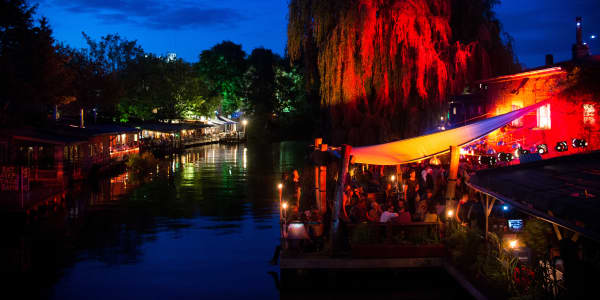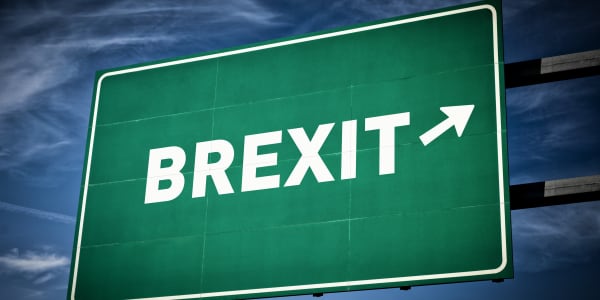When it comes to its booze - be it wine, beer, cider or spirits - Europe has a world-renowned heritage and reputation. But how can it avoid a hangover as tastes change?
The market size for alcoholic drinks in Western Europe has shrunk over the past five years. Statistics from Euromonitor show that, in terms of volume, the market contracted by around 5 percent between 2009 and 2015 from almost 46 billion litres of alcohol to 43.3 billion.
CNBC takes a look at how some of Europe's drinks industries are doing.
Brewing beer
European beer, in particular, has struggled. The market was worth 131.5 billion euros ($148 billion) in 2009, but this fell to 122.5 billion euros 2014, a sharp decline of 6.8 percent.
However, European beer remains popular internationally. One of the world's biggest brewers, Heineken, sells 250 brands in 179 countries around the world.
"Europe has the reputation as an "old world" expert with a long-standing heritage of making great beers. Particularly Belgium, Germany, Czech Republic and U.K.," Jonny Forsyth, global drinks analyst at Mintel, told CNBC via email.
"This gives brands an automatic kudos among foreign drinkers who are increasingly influenced by Western lifestyles and trends and want the status and knowledge that they are drinking "the good stuff."
Despite its strong reputation, beer sales are being affected by two trends.
First, beers from the U.S. are becoming much more popular.
"Innovative American beer producers are really muscling in on the global beer sector because they are the craft beer pioneers and craft is really taking off around the world," explained Forsyth.
"This is making America seem a much more exciting and vibrant place for beer-making, and makes Europe look a little more old-fashioned."
Secondly, the craft beer revolution is taking significant market share from the large European brewers.
In the U.K., for instance, lager sales have dropped by 8 percent over the past 5 years according to market research by Mintel, whereas sales of bitters and ales have grown from 895 million litres in 2014 to 913 million litres in 2015.
"Global interest in craft beers is inspiring more local brewing," Forsyth said. "Microbrewers in Brazil, for example, have won international awards and made use of local Brazilian ingredients to create their own unique, local style of beers.
"Craft is mainly about local and experimentation so it is definitely conceivable that as locals realise they too can create great beer, that will eat into the share of the European traditional brewers."
Crafting cider
This global competition has left Europe's big beer brewers with only a few choices.
Some have turned to acquiring their craft beer competitors, such as AB InBev, the world's largest brewer, which bought U.K. craft beer maker Camden Town Brewery at the end of in 2015.
Others have turned to offering a broader range of products, such as their own range of craft beers and making apple cider.
In contrast to beer sales, cider sales have increased, growing by more than 100 million litres since 2009 to 1.313 billion litres by 2015, an increase of 9.5 percent.
Spiros Malandrakis, senior industry analyst of alcoholic drinks for Euromonitor, explained why cider has become much more popular.
"[Cider products] are sweet in the palate, are easier to down and they have been doing really well across the pond," he told CNBC over the phone.
"Over the last three years, cider has been taking over the States like a storm, because it was positioned as much more artisanal, ideal for celiac disease [and] much more female friendly," he said.
Heineken, for instance, now offers cider and craft beer products to consumers.
"We expect to see continued and increasing consumer demand for premium and craft beers – segments where we are already winning," a spokesperson told CNBC via email. "Innovation is firmly embedded in our business and we have focussed our innovation spend on areas which will fuel continued growth, including cider, craft and variety beers."
Would you like a bottle of English wine?
European wine has also struggled in recent years. The market size shrank by 7.6 percent to 11.6 billion litres between 2009 and 2015, although the sparkling wine category has increased in popularity, growing by 6.6 percent to 1.16 billion litres over the same time period.
The wine market has changed as new countries have started to offer their own products.
"We've seen the rise of interesting wines coming from alternative countries, not from the usual suspects," explained Malandrakis. "English wine, for example, used to be a joke up to three years ago. Now it is getting many awards."
Climate change is also a factor, and some wine producers are future-proofing themselves by setting up shop in new locations.
"The major champagne houses are buying properties in the U.K. on the back of changes in climate," said Malandrakis.
"The changes in climate are already allowing the production of really high quality sparkling wines in the south of England and this is expected to be more so the case in the long term."







